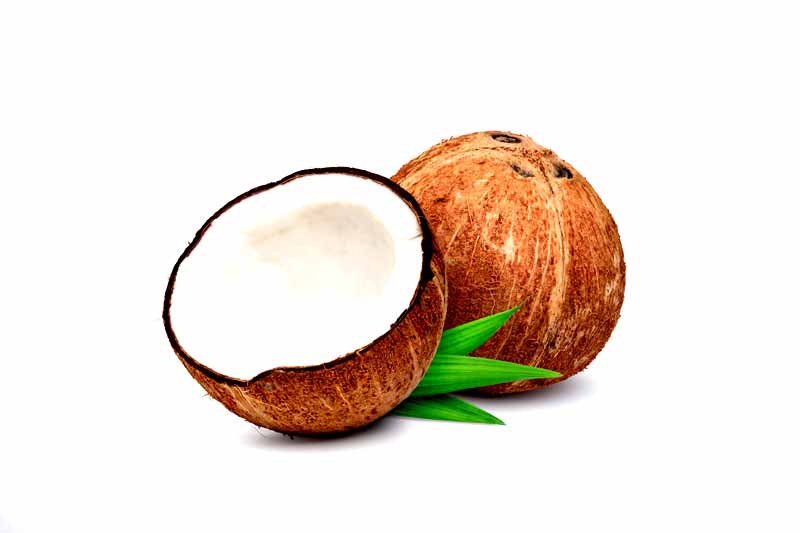Quick Facts
Botanical Name: Cocos nucifera
Family Name: Arecaceae
Common Name: Coconut oil
Part used: Copra
Specific Gravity: 0.908 to 0.921@20°C
Refractive Index: 1.440-1.475@20°C
Optical Rotation: N/A
Blends Well With: Coconut oil is ideal for blending with heavier and thicker base oils like olive, avocado or castor. It can also be used as 100% base oil and also as carrier oil with different essential oils.
Uses
Coconut oil supports healthy thyroid functions and it increases sun tolerance and avoid burning. Coconut oil can be used as a natural sunscreen and helps to get rid of cradle cap on small babies. It kills yeast and yeast infections when applied topically and can also be used as tropical massage oil. Coconut oil can be used as a natural chap stick and it can help skin heal faster after injuries or infections. Coconut oil is a natural conditioner and it can be rubbed into dry hair and left for hours for better results. Coconut oil can be used on nursing nipples to sooth irritation and can also help sooth eczema and psoriasis. Coconut oil can help improve insulin levels and this oil mixed with a drop of oregano oil is good to improve gum health. It helps improve cholesterol ratios and a blend of one tablespoon into hot tea helps speedy recovery from flu and cold. Coconut oil can be used as a replacement for vegetable oils in cooking and this oil helps reduce appearance of varicose veins. Coconut oil can be used as natural shaving cream and after shave lotion.
Countries where it "s found: Indonesia, India, Philippines,Brazil and Sri Lanka are the major coconut producing countries.
Harvesting Information
The coconut palm tree (Cocosnucifera) is found throughout the tropics, where it is part of the lives of the local people especially in the low islands of the Pacific where, in the absence of land-based natural resources, it provides almost all the necessities of life like food, drink, oil, medicine, fibre, timber, thatch, mats, fuel, and domestic utensils.
History of the Plant
The term coconut dates back to the 16th century. Tropics and subtropics are the natural habitats of the plant. The coconut is a plant which favourably grows on the shorelines; it flourishes on sandy soils. The fruit prefers rainy and sunny weather but it cannot resist low temperatures. For a favourable growth coconuts also require an area of high humidity.
 Extraction Process
Extraction Process
Well dried copra is cleaned well from any foreign matter and then cut into small chips in a copra cutter. The chips are then fed into steam jacketed kettles and cooked mildly at a temperature of 70°C for 30 minutes. After proper cooking, the cooked material is fed into the expeller continuously and pressed twice. This oil is filtered by means of a filter press and the quality of copra is dependent on the quality of coconut oil.
Commonly known Benefits
Coconut oil is supposed to be one of the healthiest foods on the planet and it contains healthy fats called medium-chain fatty acids (MCFAs) which include exclusive fats which include caprylic acid, lauric acid and capric acid. Around 62% of the oil in coconut are made up of these healthy fatty acids and 91% of the fat in coconut is healthy saturated fat. Coconut oil is easier to digest and not readily stored as fat. It is an anti-microbial and anti-fungal and is easily processed by liver.
-
Smell good but shipping was not as fast as i would like to have
Valerie- United Kingdom 15 February, 2016
Write a Review





